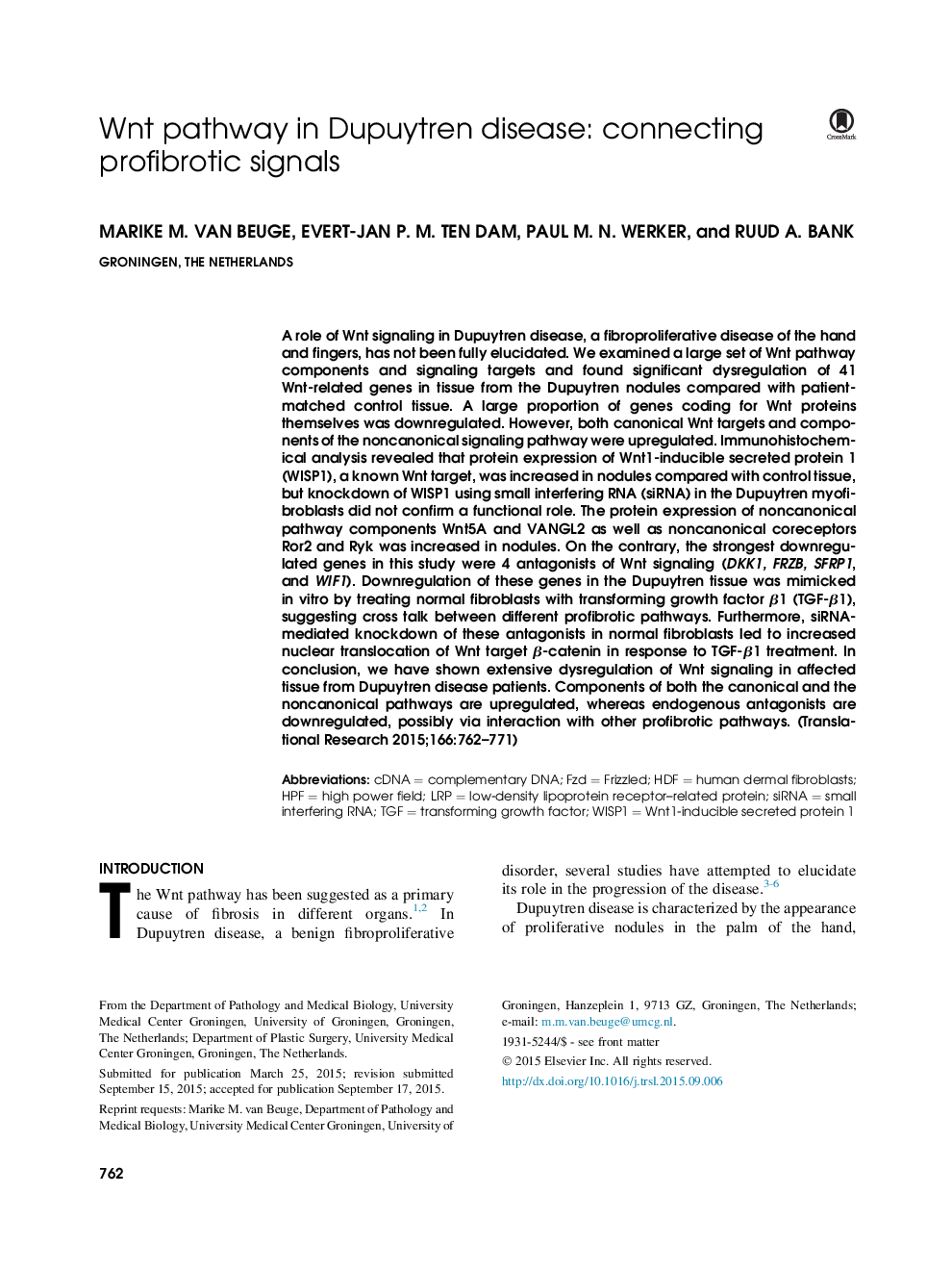| کد مقاله | کد نشریه | سال انتشار | مقاله انگلیسی | نسخه تمام متن |
|---|---|---|---|---|
| 3840114 | 1247889 | 2015 | 13 صفحه PDF | دانلود رایگان |
عنوان انگلیسی مقاله ISI
Wnt pathway in Dupuytren disease: connecting profibrotic signals
دانلود مقاله + سفارش ترجمه
دانلود مقاله ISI انگلیسی
رایگان برای ایرانیان
کلمات کلیدی
موضوعات مرتبط
علوم پزشکی و سلامت
پزشکی و دندانپزشکی
پزشکی و دندانپزشکی (عمومی)
پیش نمایش صفحه اول مقاله

چکیده انگلیسی
A role of Wnt signaling in Dupuytren disease, a fibroproliferative disease of the hand and fingers, has not been fully elucidated. We examined a large set of Wnt pathway components and signaling targets and found significant dysregulation of 41 Wnt-related genes in tissue from the Dupuytren nodules compared with patient-matched control tissue. A large proportion of genes coding for Wnt proteins themselves was downregulated. However, both canonical Wnt targets and components of the noncanonical signaling pathway were upregulated. Immunohistochemical analysis revealed that protein expression of Wnt1-inducible secreted protein 1 (WISP1), a known Wnt target, was increased in nodules compared with control tissue, but knockdown of WISP1 using small interfering RNA (siRNA) in the Dupuytren myofibroblasts did not confirm a functional role. The protein expression of noncanonical pathway components Wnt5A and VANGL2 as well as noncanonical coreceptors Ror2 and Ryk was increased in nodules. On the contrary, the strongest downregulated genes in this study were 4 antagonists of Wnt signaling (DKK1, FRZB, SFRP1, and WIF1). Downregulation of these genes in the Dupuytren tissue was mimicked in vitro by treating normal fibroblasts with transforming growth factor β1 (TGF-β1), suggesting cross talk between different profibrotic pathways. Furthermore, siRNA-mediated knockdown of these antagonists in normal fibroblasts led to increased nuclear translocation of Wnt target β-catenin in response to TGF-β1 treatment. In conclusion, we have shown extensive dysregulation of Wnt signaling in affected tissue from Dupuytren disease patients. Components of both the canonical and the noncanonical pathways are upregulated, whereas endogenous antagonists are downregulated, possibly via interaction with other profibrotic pathways.
ناشر
Database: Elsevier - ScienceDirect (ساینس دایرکت)
Journal: Translational Research - Volume 166, Issue 6, December 2015, Pages 762-771.e3
Journal: Translational Research - Volume 166, Issue 6, December 2015, Pages 762-771.e3
نویسندگان
Marike M. van Beuge, Evert-Jan P.M. ten Dam, Paul M.N. Werker, Ruud A. Bank,